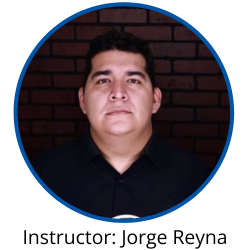Math and Physics for NDT: Electromagnetic Testing 14 May 2025

Learning Event: Instructor-Led Training, Virtual
Format: 1-day class, Zoom
Dates: 14 May 2025, 8:00 a.m. - 3:00 p.m. (America/Chicago/CT)
Contact Hours: 6
IACET CEUs: NA
Valid for ASNT Level III recertification: Yes
Pricing
- Member: $350
- Nonmember/Associate: $525
Associate members and nonmembers do not receive discounts. Upgrade your membership today to access exclusive savings!
Course Description:
This course provides a comprehensive foundation in mathematical principles essential for ET applications. It is split into two sections, the first is a pre-requisite section where learners will strengthen essential mathematical skills by mastering numerical formatting, unit conversions, exponents, and logarithms while applying the order of operations to solve equations. You will also explore trigonometric principles, including right triangle properties, Pythagorean theorem, and sine functions, to build a strong foundation for technical and engineering applications.
Course Objectives:
- Convert between CGS and SI units for electrical and magnetic measurements
- Convert between conductivity and resistivity units
- Define electromagnetic induction and describe factors influencing it
- Explain how alternating current (AC) is generated and represented graphically
- Define AC frequency and its significance
- Define electromotive force (EMF) and apply calculations based on coil parameters
- Explain how eddy currents are generated and their impact on test parts
- Define and measure electrical current and potential difference
- Differentiate between resistance and specific resistance
- Use Ohm’s law to establish relationships among voltage, resistance, and current
- Perform resistance and conductance calculations in SI and traditional units
- Explain the principle of self-inductance and define phase lag
- Diagram phase relationships in purely inductive and resistive circuits
- Define impedance and represent impedance-current relationships graphically
- Use vector addition and the Pythagorean theorem to determine impedance
- Calculate phase angles and explain impedance-based discontinuity detection
- Define permeability and calculate magnetic permeability from flux density and magnetizing force
- Identify standard depth of penetration using graphical representations
- Calculate depth of penetration based on frequency, permeability, and conductivity
- Calculate the fill factor for encircling and bobbin coils based on object and coil dimensions
- Define Q factor and calculate it using inductive reactance and resistance
- Construct impedance plane diagrams from coil impedance or electrical properties
- Describe the effects of liftoff, edge effect, frequency changes, and material thickness on impedance plane diagrams
- Analyze how frequency variations affect depth of penetration

Jorge T. Reyna is a skilled and experienced professional in the field of NDT, welding, and coatings inspection. He holds several certifications including AMPP Master Coatings Inspector (#MCI-0059) and ASNT Level IIIs (#224796) in various non-destructive testing methods such as PT, MT, VT, UT, LT, RT, ET, MFL and IR. He is also a senior AWS SCWI (#22010198), AMPP Senior Certified Coating Inspector (#S-110220), SSPC PCS (#2021-402-428), and ACI Certified Concrete Field Testing inspector (#02082547). Jorge is well-equipped to handle any inspection project. He has extensive field experience, having worked on projects in Mexico, Panama, Ecuador, and China. He is also fluent in Norwegian and Italian, which allows him to communicate effectively with clients and contractors in those countries. Since 2013, Jorge manages his own inspection company named JRSA Inspections with its base in Monterrey, Mexico.
For any questions, please email education@asnt.org